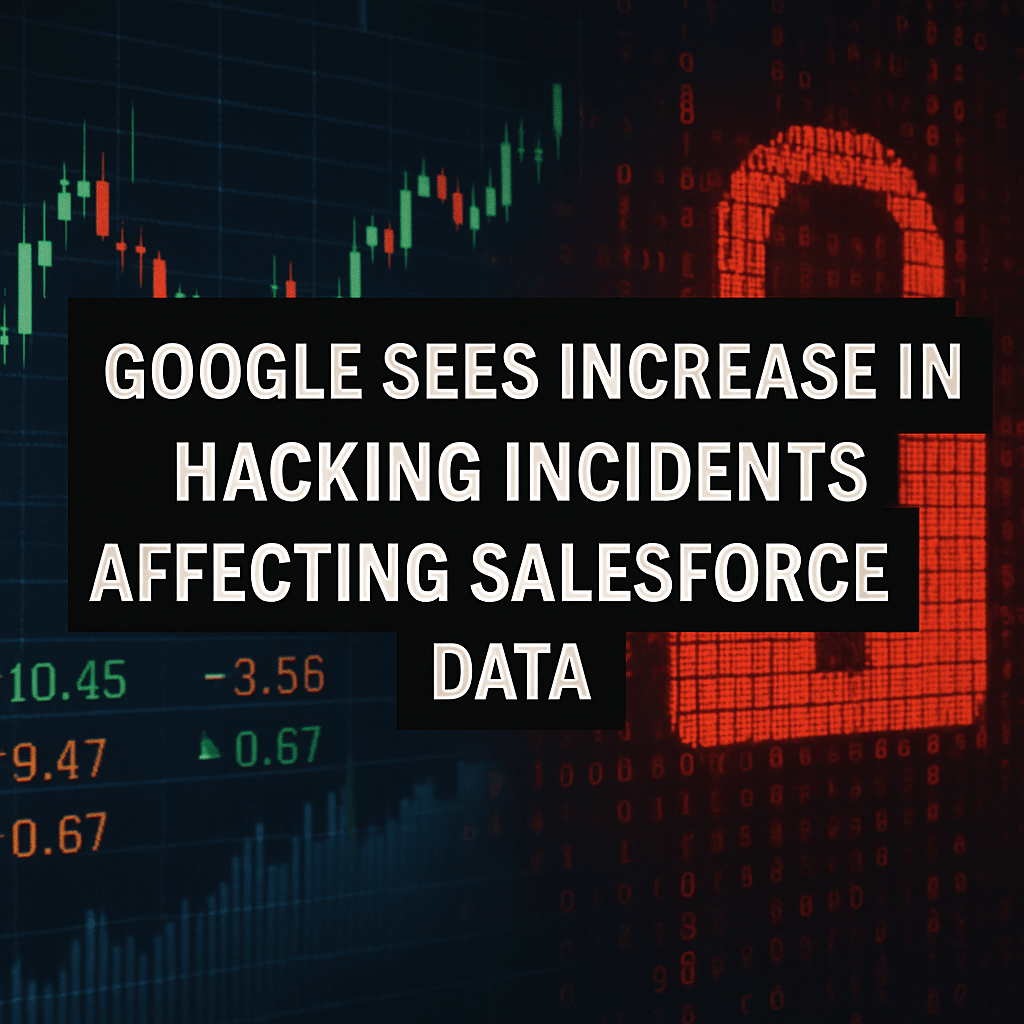Google Sees Increase in Hacking Incidents Affecting Salesforce Data

A newly released report from Google’s threat intelligence group highlights a troubling trend: a hacking group is impersonating IT personnel to breach companies’ Salesforce tools, leading to data theft and extortion. The group, identified by Google, is linked to a loosely affiliated network known as the Com, primarily operating from the US, UK, and Western Europe.
Attack Methodology
According to Google, the hackers have successfully compromised the networks of at least 20 organizations across the US and Europe. One of the most alarming techniques employed by the hacking group involves socially engineered phone calls where hackers pose as IT support, convincing employees to disclose sensitive credentials.
- The attackers employ voice phishing tactics to manipulate unsuspecting employees.
- In some cases, hackers have gone a step further by tricking victims into connecting malicious applications to their organization’s Salesforce portal, resulting in unauthorized data access.
Implications for Victims
The extent of the damage has been significant, with some victims reporting extortion demands arriving months after their data was compromised. Google emphasizes that the attackers relied on deceptive strategies rather than exploiting vulnerabilities within Salesforce itself. A Salesforce spokesperson stated,
“There’s no indication the issue described stems from any vulnerability inherent to our services.”
This kind of social engineering attack poses severe risks as it targets the weakest link in cybersecurity—human behavior. In a March blog post, Salesforce warned customers about evolving threats, reiterating the importance of employee training and vigilance against such techniques.
Recent Trends in Cybersecurity Incidents
The Google report arrives amidst a broader context of rising cyberattacks targeting various sectors, particularly retail. Recent months have seen high-profile breaches, including:
- Marks & Spencer Group Plc: Facing a potential £300 million ($406 million) impact on operating profit due to a ransomware incident.
- Co-op Group: Acknowledged being a victim of a cyberattack shortly after the Marks & Spencer breach.
- Other notable companies like Adidas AG, Victoria’s Secret & Co., Cartier, and The North Face have also reported cybersecurity incidents.
While Google indicates that this specific group has targeted retail, experts caution that the broader implications of their tactics could pose risks across multiple industries. Austin Larsen, a principal threat analyst at Google’s Threat Analyst Group, remarked on the group’s versatility, stating, “While we’ve seen this group target retail, they have also targeted other industries.”
A Look at the Hacking Group’s Background
The group in question utilizes infrastructure and techniques previously associated with the Com, which encompasses a range of cybercriminal activities, many of which involve impersonating IT staff. Some members of this group are also suspected to be linked to ‘Scattered Spider’, a hacking gang implicated in various high-profile attacks, often through SIM-swapping, which allows them to hijack victims’ phone numbers and access their accounts.
This connection underscores a troubling trend in which young male perpetrators, organized via social media platforms, exploit weaknesses in cybersecurity protocols to carry out their schemes, often leading to significant thefts, including cryptocurrency.
Best Practices for Organizations
As the sophistication of cyberattacks continues to evolve, organizations must enhance their cybersecurity measures. Google suggests that companies take proactive steps, including:
- Employee Training: Regular training sessions that educate employees about the risks of social engineering attacks.
- Multi-factor Authentication: Implementing robust authentication measures to protect sensitive data.
- Incident Response Planning: Developing and refining incident response strategies to address potential breaches effectively.
With the rise in social engineering tactics and hacking incidents, maintaining a proactive approach to cybersecurity is more crucial than ever.
Conclusion
As cyber threats continue to grow, both in number and complexity, vigilance is essential. The findings from Google’s report serve as a reminder that organizations cannot solely rely on technological defenses; they must also prioritize human awareness and training to combat these insidious threats effectively.